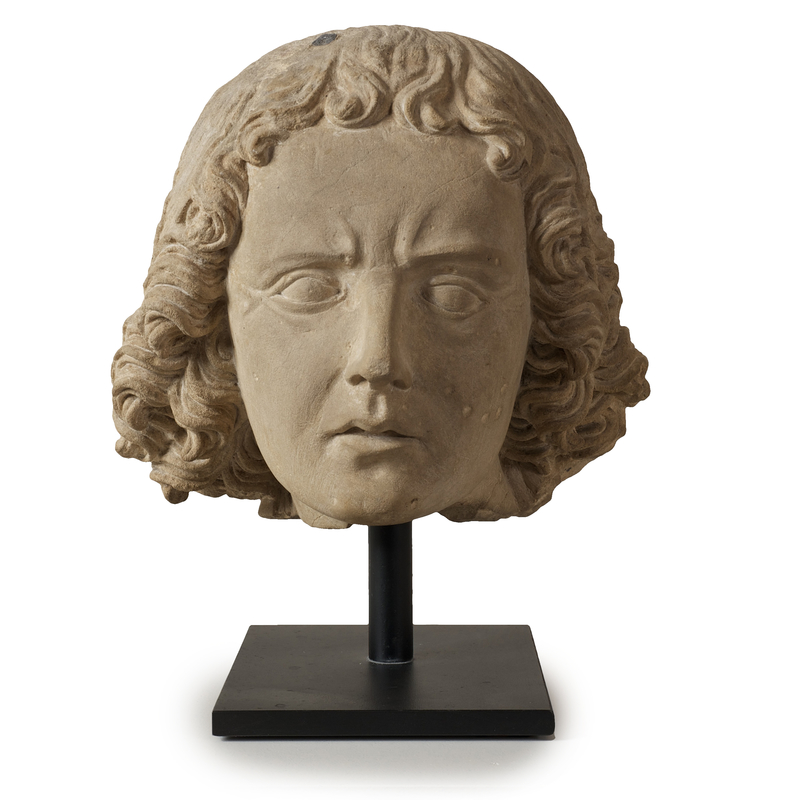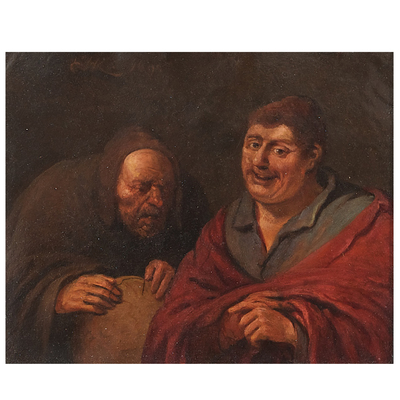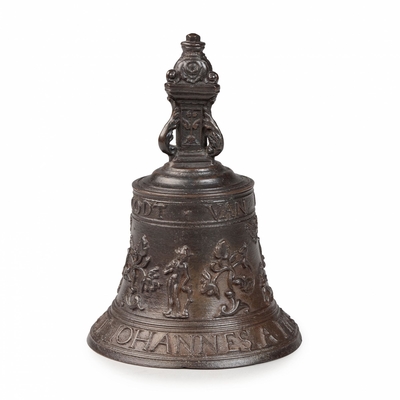Sandstone head of St. John
Global shipping available
- Origin
- France
- Period
- C. 1450
- Material
- Sandstone
- Height
- 25 cm
- Width
- 26 cm
- Literature
W.H. Forsyth, The Entombment of Christ - French Sculptures of the Fifteenth and Sixteenth Centuries, Massachusetts 1970, pp. 1 - 15, 258, 275, 278, 291, 313
Questions about this object?
Please use one of the contact options below:
Description
This sandstone head is possibly the head of St. John and was part of an entombment or lamentation. The head, framed with curly hair, has a grieving expression: the frowned eyebrows, the half-open mouth and the wrinkles around the eyes give the head a mournful expression. At the top left of the head, there is a round piece of lead; it is unclear what the function of this piece is, or where it came from.
The grieving head may have been part of a group of statues representing the entombment and lamentation of Christ. The entombment of Christ is an often depicted theme in the Western art tradition, especially in the fifteenth and sixteenth centuries. The suffering and death of Christ as a human being was linked to one's own known suffering so that one could also share in Christ's resurrection. After Jezus died on the cross on Golgotha, Joseph of Arimathea and Nicodemus asked permission from Pontius Pilate to take him down from the cross and bury him. They wrapped his body in linen cloths and laid him in a stone tomb.
The four evangelists each give their own interpretation of the events, varying in the number of people present and the order of events surrounding the entombment. Joseph of Arimathea, Nicodemus, Mary the mother of Jesus, St. John and a number of holy women (such as Mary Magdalene, Mary of Klopas, or Salome) are often depicted. Sometimes the group is expanded and soldiers are added. In most sculptural groups Joseph of Arimathea, often richly clothed, stands at the head of Christ and Nicodemus at his feet. Women stand weeping at the side of Jesus and sometimes Mary, the mother of Jesus, is supported by St. John. In depictions of the entombment in French Gothic, the grief of the bystanders at the burial was not as openly displayed as, for example, in Byzantine or Italian art. The facial expressions and gestures of mourning primarily depict inner sadness and resignation, an expression that is also seen on this head. Sculptural groups of the entombment stood, often life-size, in a chapel or church in a large vaulted niche.
In 'Forsyth's - The Entombment of Christ - French Sculptures of the Fifteenth and Sixteenth Centuries', the French sculpture groups of Christ's funeral give an impression of how this head may have been part of an entombment scene (see the sculptural groups in Charmes, Chaource, Villeneuve-l'Archevêque, Malesherbes and Biron). Of the male attendants - Joseph of Arimathea, Nicodemus and John - it is likely that the head represents John, given the modest hairstyle and solemn facial expression.





